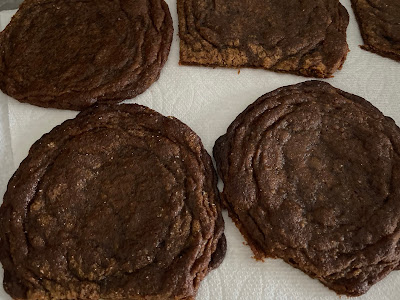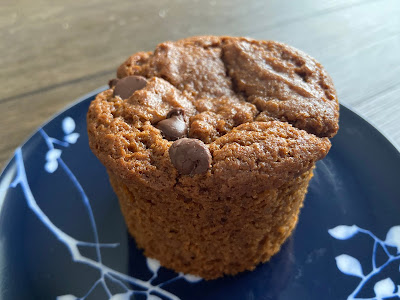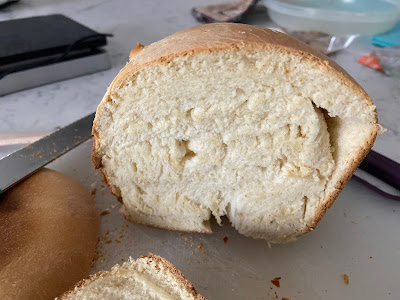I've been baking a lot of brownies lately. They're the easiest to package and ship in care packages and, once vacuum sealed, they have a better chance than cookies of staying fresh in transit, not to mention they're unlikely to crumble or break like cookies. They will also survive intense heat better.
The original recipe would make these as plain but I dressed it up a bit by adding chopped up chunks of Mounds bars to turn them into coconut brownies.
These were moist and fudgy, the two things I require in any brownie. The best way to bake brownies is to do the toothpick test in a corner first and the center of the brownie second. If it comes out clean in the corner but with a few moist crumbs in the middle, the brownie is at the optimal bake. The corners and ends won't be too dry and the middle will have baked enough to be fudgy when cooled but not too underbaked or mushy.
Every oven is different so I can't give you exact times when this optimal point will be reached. And you don't want to keep opening your oven door to poke the brownies and keep checking or too much heat will escape. I'd advise not even trying to test it until at least 20 minutes have passed. If the corner or edge isn't clean but has raw batter, then your brownie has longer to go.
I liked this recipe because it made brownies of a good thickness and the combination of melted bittersweet chocolate and cocoa powder ensures it has a fudgy texture and a deep chocolate flavor.
6 tablespoons unsalted butter
6 ounces semisweet chocolate, coarsely chopped
1/4 cup unsweetened Dutch process cocoa
3/4 cup all-purpose flour
1/4 teaspoon baking powder
1/4 teaspoon salt
1 cup granulated sugar
2 large eggs
2 teaspoons vanilla extract
- Preheat oven to 350 degrees F. Line an 8 x 8-inch baking pan with foil and lightly spray with nonstick cooking spray.
- Melt butter, chocolate and cocoa powder in the top half of a double boiler over hot water, whisking to combine until melted and smooth. Cool slightly.
- In a separate bowl, whisk together flour, baking powder and salt; set aside.
- In the bowl of a stand mixer fitted with the whisk attachment, beat together sugar, eggs and vanilla on medium speed until pale, about 3-4 minutes. Add chocolate mixture and beat on low speed until combined. Add flour mixture and mix on low speed until just combined.
- Pour into prepared pan and smooth top. Bake until toothpick inserted near the center comes out with a few moist crumbs, not raw batter, about 35 minutes. Cool completely before cutting and serving.





















































